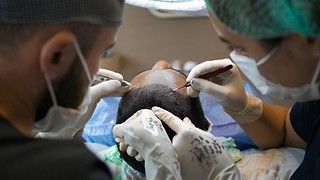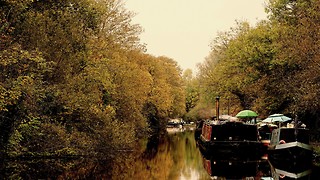Ballet: Jewels
Kizzie Burkett on the Royal Ballet’s sparkling abstract ballet

Jewels is a festive delight. This trilogy of one-act ballets is inspired by the window display of Van Cleef & Arpels, with each section loosely themed around a jewel, a composer and a country. Claiming to be the first full-length abstract ballet when produced in 1967, George Balanchine’s choreography sparkles.
The evening opened with Emeralds, an elegant piece performed to Fauré as a nod towards ballet’s French origins. The piece came alive when attention was directed towards geometry, the dancers performing simple choreography but weaving between one another or into unexpected formations to create the many, glistening facets of a jewel. The Ryoichi Hirano, Elizabeth Harrod and Akane Takada’s pas de trios was a stunning example of this. This is not to say that the solos and duets were any less beautiful, but they somehow lacked the ingenuity of the larger group sections.
It was the second piece, Rubies, which stood out. Stravinsky’s score provided the backdrop for Jazz Age-inspired movements that can only be described as fun – think parallel hops, pony trots, swinging hips and walking on the heel of the foot. It is a piece that constantly moves and provides entertainment – before the audience can comprehend that one dancer has left the stage, another has taken their place to perform a series of quirky, energetic steps that never looked tired. One of my favourite moments was when the flawless Zenaida Yenowsky linked elbows with four men in turn to perform a jolly do-si-do, finishing with a powerfully split grand jete en tournant. Nevertheless, it was Steven McRae and his series of turns off-stage which earned spontaneous applause and stole the show. His cheeky, lop-sided smile and raised eyebrow throughout the twenty-minute piece showed his love of dance and kept the audience guessing. Twice he suddenly let go of his partner, the beautiful Sarah Lamb, as the music paused and the audience gasped, whilst he watched on with glee in a pedestrian-like stance only to step in confidently at the last moment to catch her. There is nothing this twenty-seven-year-old can’t do.
Diamonds, with music by Tchaikovsky, closed the evening with sophistication. Although it was less coherent than the preceding section, I enjoyed the juxtaposition of the romantic, intimate duet between husband and wife Thiago Soares and Marianela Nuñez with the grandeur of the finale polonaise performed in unison by a flurry of thirty-two couples. Nuñez was the standout female of the night – her motionless arabesque poses were particularly delightful. Although Soares was an excellent partner, I was disappointed by his solo dancing, which appeared stiff – I was worried he wouldn’t make his series of pirouettes due to tense shoulders. Throughout the entire evening, I felt that the men lacked any real choreography to get their teeth into whilst the women were able to truly glisten; only McRae was able to escape the role of a support for his partner and dance in his own right. Nevertheless, Jewels is a fantastic piece that shows the talent at every level of the Royal Ballet, and is a welcome alternative to the usual festive run of The Nutcracker. I look forward to seeing it again in the future.
To find out more about how you can watch performances like this on a student budget, visit www.facebook.com/RoyalOperaHouseCambridge
 Science / Who gets to stay cool in Cambridge?7 September 2025
Science / Who gets to stay cool in Cambridge?7 September 2025 News / Tompkins Table 2025: Trinity widens gap on Christ’s19 August 2025
News / Tompkins Table 2025: Trinity widens gap on Christ’s19 August 2025 News / Government allows Gazan students to take up university places6 September 2025
News / Government allows Gazan students to take up university places6 September 2025 Features / Meet the Cambridge students whose names live up to their degree9 September 2025
Features / Meet the Cambridge students whose names live up to their degree9 September 2025 News / Two pro-Palestine demonstrations held in past week8 September 2025
News / Two pro-Palestine demonstrations held in past week8 September 2025









